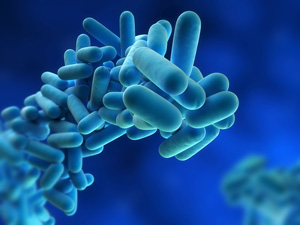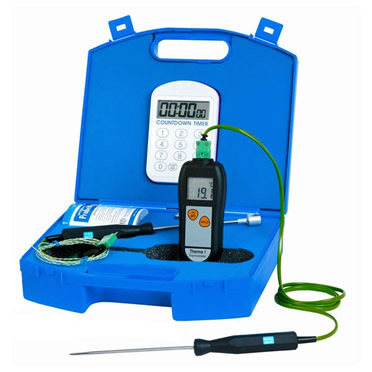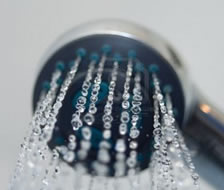
- |
- Automotive
- |
- Data Acquisition
- |
- Electrical
- |
- Environmental
- |
- Food Safety
- |
- Mechanical Measurement
- |
- Multimeters
- |
- Test & Measurement
- |
- Temperature Monitoring
- |
- Test Accessories
- |
- Thermometers
- |

- Therma 1 Thermometer
- Penetration Probe
- Precision Pipe Surface Probe
- PTFE Wire Probe
- Waterproof Countdown Timer
- Mini Tub of
70 Probe-Wipes - ABS carrying case
NZ$346.00*
What is Legionnaires' Disease?
Legionnaires' Disease is a potentially fatal form of pneumonia. The cause of the disease is a bacterium called legionella pneumophila. Symptoms of Legionnaires' can include headache, diarrhoea, dry cough, drowsiness and delirium.
How is it caught?
Legionnaires' Disease is caught by inhaling small droplets of water suspended in the air which contain the legionella bacterium, e.g. spray from showers and taps.
What are the sources of legionella bacterium?
The legionella bacterium is found mainly in stagnant water, e.g. ponds and rivers or buildings containing cooling towers, evaporation condensers, air conditioning and industrial cooling systems, humidifiers, spa baths and hot and cold water systems.

What areas are most vulnerable?
A wide range of workplaces, but particularly residential accommodation managed privately or by organisations, e.g. local authorities, universities, hospitals, nursing and care homes, housing associations, charities, hostels, private landlords, managing agents, hoteliers and holiday accommodation providers, including guest houses and camping/caravan site owners.

Who is most at risk?
People most at risk are those over 45, diabetics, those who are already ill, particularly with chronic diseases or whose immune system is impaired. Smokers and heavy drinkers also have an increased susceptibility.
How using a thermometer can help control legionella in water
Incorrect water temperature is a key risk factor for legionella growth. The legionella bacteria multiply in water at temperatures between 20 and 45°. A typical method of control is to store hot water above 60° and distribute it at above 55° (45° for retirement homes & early childhood education centres to prevent scalding). Cold water should be kept below 20°.
SPECIFICATIONS
- Measurement Range:
- Resolution:
- Accuracy:
- Input Type:
- Display:
- Dimensions:
- Battery:
- -99.9 to 1372°C
- -99.9 to 299.9: 0.1° otherwise 1°
- ±(0.1% of reading + 0.4°)
- K-Type Thermocouple
- 12mm LCD
- 128mm(L) x 56(W) x 25mm, 130gm
- 3 x AAA provides 1000Hrs of operation

Did you know?....
Legionnaires disease got its name from an outbreak of pneumonia during a 1976 convention of American Legionnaires.
It‘s believed to have spread from a hotel's air conditioning system.